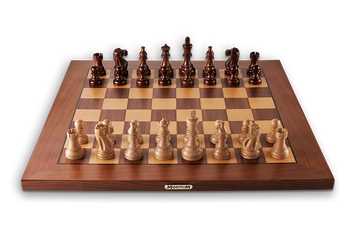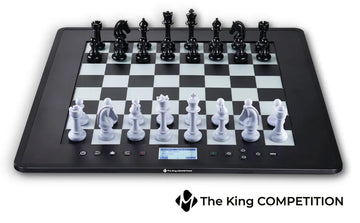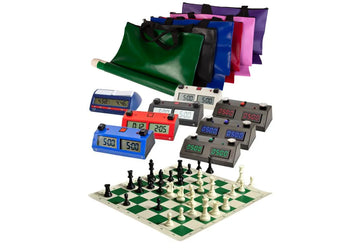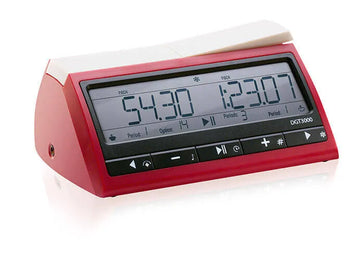4 Secrets to Running the Perfect Chess Club
The chess community is vast and diverse. This means that no chess club will have the same needs. Still, there are some fundamental secrets you can apply when running just about any chess club.
Whether you're starting out or already have a dedicated group of players, here are four secrets to running the perfect chess club.
1. Make Your Chess Club a Fun Environment
Everyone goes to the chess club with the aim of having a fun time. But sometimes, players can get left out of games. Or they simply get tired of playing only one kind of chess game. Here's how you can maximize the amount of fun players have at your chess club.
Make Sure all Players Play Chess
Make sure that all your attendees are actively playing chess at your club. It sounds simple, but keeping players active in chess games the whole time they are at the chess club requires support.
Here are some common situations that keep players from participating in games, plus how to solve them:
Situation: Everyone else is too focused on their games to notice a left-out player. Sometimes, when players get invested in the chess match in front of them, they don't even notice when a player is standing on the outside, waiting to get in on a game.
Solution: Encourage players to limit the number of blitz games they play against the same person.
Situation: A player is too shy to introduce themselves. New chess club attendees can get shy and sometimes aren't used to working up the social nerve to ask a complete stranger to start a game.
Solution: Have a leader at your chess club try to spot when a newcomer is patiently waiting to play in a chess match.
Situation: Everyone else is playing long, untimed games. A player might be stuck waiting for a chess match to open because everyone else is stuck in an untimed game that never seems to end.
Solution: Divide the group into preferred time controls. This will keep more players active in the kinds of games they like.
Mix it up with Chess Variations
It's easy for chess clubs to end up with players from different interest levels, strengths, and preferences. Playing chess variations is a great way to facilitate fun games between a more diverse range of strengths of players.
Here are some deas for chess variations:
Blindfold chess is an excellent way for more skilled players to practice visualization. Blindfold chess refers to when a player makes moves without physically looking at a board, instead relying on notation alone. You can have two players play blindfolded with a spotter. You could also have a newer or greener player play against your club's strongest player but blindfolded. If two players have very strong visualization, they can rely only on notation to play their game.
Hand-in-brain chess is when players break off into teams of two but play on one board. One player, the "brain," announces a piece to move. The other, the "hand," moves the piece to the desired position. This variation allows you to pair players of differing strengths to even the playing field.

Bughouse chess is a four-player cooperative variation of chess with two sets of paired players who can capture material on one board to use on another. This is another great way to pair players of differing strengths into even teams.
Crazyhouse chess requires two complete sets of pieces but one board. When you capture an opponent's piece, you can use it later in the game as your color. Crazyhouse is like bughouse but with two players.
Fischer Random or Chess960 is a variation that randomizes the starting position of pieces. This forces both players to play without a memorized opening. Bobby Fischer popularized this variant from his disdain for opening theory's impact on creativity in chess.
These are just a few chess variations you can try at your chess club.
Related: Viking Chess: An Ancient Alternative
Establish a Code of Conduct at your Chess Club
In any environment, the best way to maximize fun is to maximize respect and kindness. Hold everyone to a code of conduct.
Chess players should treat each other respectfully, use appropriate language, and play fair. Make it clear that you expect players to behave themselves. Don't allow disrespect, hate, or harassment.
Related: Are you Playing a Chess Cheat
2. Play in Chess Tournaments Together
You can encourage your club members to bond by playing at tournaments together. This is a fun way to boost morale, get experience playing more serious games, and spread awareness of your chess club.
Play in Chess Tournaments
Join chess tournaments run by different groups in your community. This is a great way to get involved in the local community and meet new people who would want to go to your chess club.
Plus, you and your club members can form a chess team and compete in team-based chess tournaments.
Host an In-House Competition
If you have at least four evenly strong players interested in competitive chess, consider having a casual in-house competition. Here are some things to consider when planning an in-house competition:
- Pick a time control. Blitz and rapid time controls are particularly fun at casual in-house competitions. Longer classical time controls allow players to practice notation and other skills for more serious, rated tournaments.
- Use an outside rating to determine the strength of participants. If a player doesn't have a USCF rating for your chess tournament's time control, you can substitute it with a Lichess or Chess.com rating.
- Use the quad system to pair off players of similar strength. Alternatively, you can use the Swiss system if you have enough participants.
3. Be Prepared for Anything at the Chess Club
It is very hard to accurately determine how many people will be there on your chess evenings. Be prepared for way too many players or way too few.
Get Enough Supplies for the Entire Group
Make sure you have enough supplies for the entire chess club. If you don't have money to spend on your club, tell players to bring their own supplies if they have them.
Some materials you want to invite people to bring include:
- Chess boards: While tournament chess sets are nice to have, players can bring any chess sets that are easy to carry at the chess club. Encourage players to bring boards and pieces that are large enough to move easily.
- Chess clocks: Standard digital chess clocks will be put to good use at a chess club, but if you don't have a chess clock, you can download an app on your phone.

For players interested in practicing notation, you can bring along notation sheets or some paper and a pen.
You should also get or create a small sign to put near your chess club so people know you are there.
Low Turnout? No Problem!
Don't blame yourself for a low turnout. Low turnouts can be caused by factors completely out of your control, such as bad weather or a busy school season, if you're a scholastic or college-level club.
Stick it out, keep going, and keep inviting players. The tides will turn, and people will show up again.
4. Think About Options for Kids Chess
In many ways, kids chess is an entirely different endeavor. If you're here, you know that chess is one of the few places kids can fully compete with adults. There are a few unique aspects to kids chess that you should consider.

Prepare kids chess clubs for their unique needs. Kids may want to improve or prepare to play in scholastic chess tournaments. Foster their growth by targeting their needs and challenging them to be the best they can be.
Teach true newbies the basics. For kids that are just starting out, have tutors to walk them through how to move each piece.
Related: Which Mistakes Beginner Chess Players Make
Teach the dedicated players more advanced skills. For kids who are picking up chess more quickly, try finding more advanced teachers and higher-level chess puzzles.
FAQ: Running the Perfect Chess Club
You don't need much at all! At a minimum, you just need one board for every two players. If you want to play timed games, you can start by getting a phone app instead.
A chess club can be as big or as small as you'd like. If you don't have much to go off of, you just need one leading representative of the club and another faithful attendee to play consistently. At this point, you look like an "active" club.
Planning a chess club can take as little as an hour a week. The easiest way to streamline planning is to set a consistent time and place to expect the club.
You shouldn't have to spend much at all at your chess club. Most people, even non-players, have a chess board at their house. By using already-owned items, you can bring together a community of people to enjoy one of the oldest games of all time.







